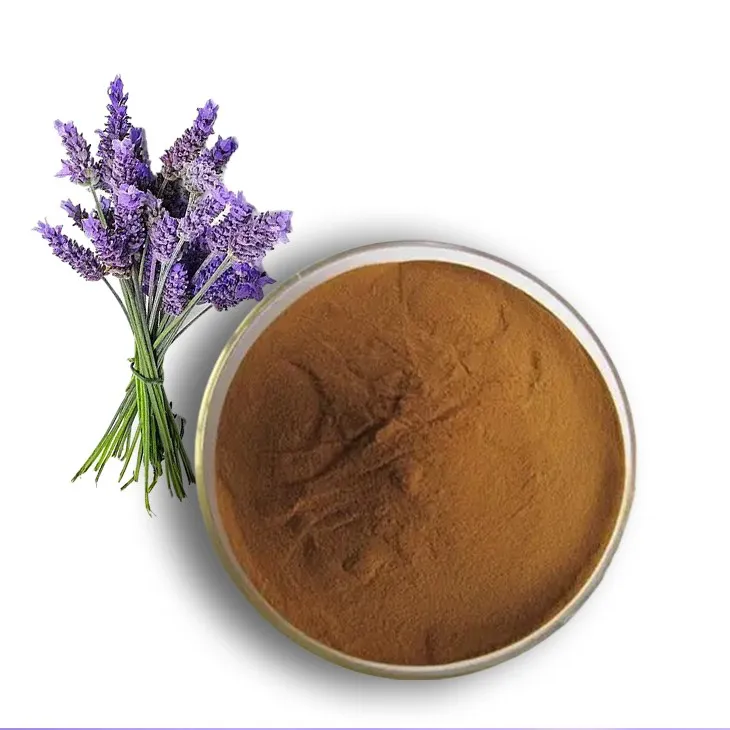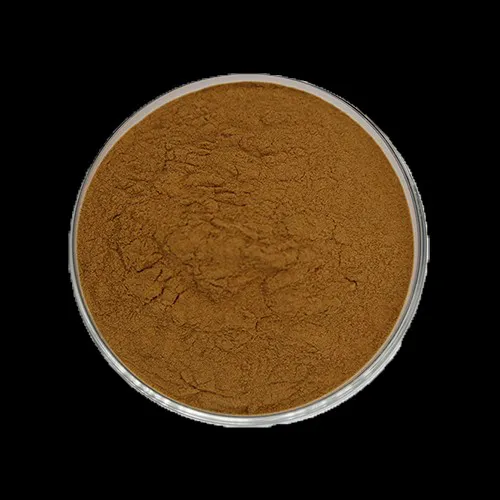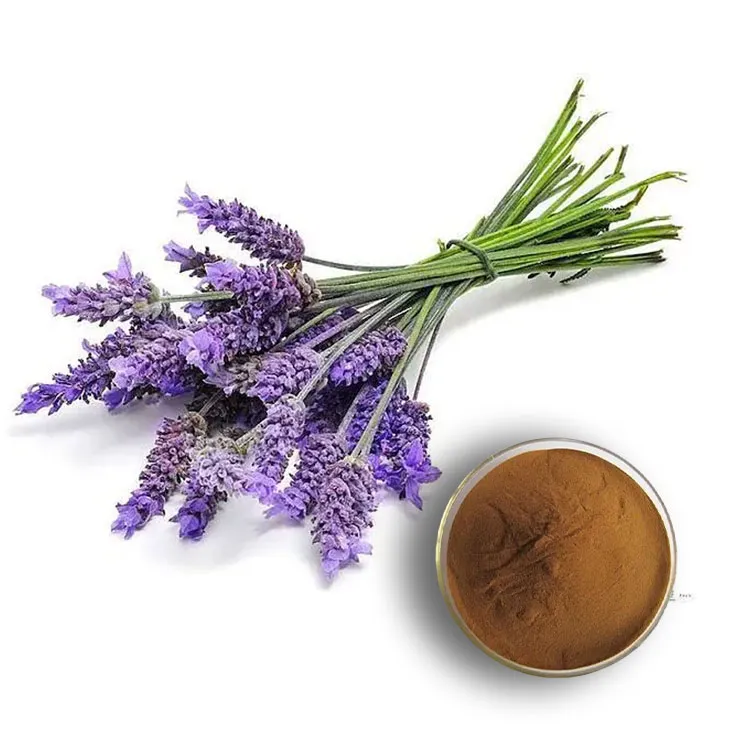- 0086-571-85302990
- sales@greenskybio.com
Optimal Bioavailability of Lavender Extract
2024-11-28

1. Introduction
Lavender, known scientifically as Lavandula angustifolia, has been used for centuries for its various properties such as its calming effect, antibacterial properties, and potential in treating skin disorders. The bioavailability of Lavender Extract plays a vital role in ensuring that these beneficial properties are effectively harnessed by the body. Bioavailability refers to the proportion of a substance (in this case, Lavender Extract) that is absorbed by the body and is able to reach the site of action. Understanding how to optimize the bioavailability of Lavender Extract can lead to more effective use in areas such as medicine, cosmetics, and aromatherapy.

2. Chemical Composition of Lavender Extract and Its Relation to Bioavailability
2.1. Key Compounds
Lavender extract contains a variety of compounds, including linalool, linalyl acetate, and terpene alcohols. Linalool, which is responsible for much of lavender's characteristic fragrance, has been shown to have antioxidant and sedative properties. Linalyl acetate also contributes to the pleasant smell of lavender and has potential anti - inflammatory effects. These compounds are lipophilic (fat - loving), which means they can easily cross cell membranes. However, their bioavailability can be affected by factors such as their chemical form within the extract. For example, if they are bound to other molecules in a way that makes them less soluble or less accessible for absorption, their bioavailability may be reduced.
2.2. Role of Minor Compounds
In addition to the major compounds, minor compounds in lavender extract also play a role in bioavailability. These may include flavonoids and phenolic acids. Flavonoids, such as Quercetin, can enhance the antioxidant activity of the extract. Phenolic acids may interact with the body's digestive enzymes and influence the absorption of the main active compounds. They can either promote or inhibit absorption depending on their concentration and the specific conditions in the digestive tract.
3. Interaction of Lavender Extract with the Body
3.1. Absorption in the Gastrointestinal Tract
When lavender extract is ingested, absorption mainly occurs in the gastrointestinal (GI) tract. The lipophilic nature of its key compounds means that they are more likely to be absorbed in the small intestine, where there is a higher concentration of bile salts to aid in emulsification and solubilization. However, the harsh environment of the stomach with its acidic pH can also affect the stability of the extract. Some compounds may be degraded or modified in the stomach, reducing their bioavailability. For example, if linalool is exposed to high acidity for an extended period, it may undergo chemical changes that make it less absorbable.
3.2. Metabolism in the Liver
Once absorbed, the compounds in lavender extract are transported to the liver via the hepatic portal vein. In the liver, they may undergo first - pass metabolism. This process can either activate or inactivate the compounds. For instance, some cytochrome P450 enzymes in the liver may metabolize linalool into more or less active metabolites. If the metabolism results in the formation of inactive metabolites, the bioavailability of the active form of linalool is effectively decreased.
3.3. Distribution in the Body
After passing through the liver, the compounds are distributed throughout the body via the bloodstream. Their lipophilic nature allows them to cross the blood - brain barrier, which is why lavender extract is often associated with effects on the central nervous system, such as relaxation and stress reduction. However, the distribution may not be uniform across all tissues. Some tissues may have a higher affinity for certain compounds in the extract, which can affect the overall bioavailability and the resulting physiological effects.
4. Technological Enhancements for Optimal Bioavailability
4.1. Extraction Methods
The method of extraction used to obtain lavender extract can significantly impact its bioavailability. Traditional extraction methods such as steam distillation may not always yield an extract with the highest bioavailability. Newer extraction techniques, such as supercritical fluid extraction, can produce a more pure and bioavailable extract. Supercritical fluid extraction uses a fluid (usually carbon dioxide) at a temperature and pressure above its critical point. This allows for a more selective extraction of the active compounds, leaving behind unwanted substances that may interfere with absorption.
4.2. Encapsulation
Encapsulation is another technique that can enhance the bioavailability of lavender extract. By encapsulating the extract in a protective coating, it can be protected from degradation in the stomach and other harsh environments. For example, encapsulating the extract in a lipid - based capsule can improve its solubility and enhance absorption in the small intestine. The encapsulation material can also be designed to release the extract at a specific site in the GI tract, further optimizing absorption.
4.3. Nano - technology
Nano - technology offers promising possibilities for improving the bioavailability of lavender extract. Nanoparticles can be used to encapsulate the extract, reducing its particle size. Smaller particle size increases the surface area to volume ratio, which can enhance dissolution and absorption. Additionally, nanoparticles can be targeted to specific cells or tissues in the body, increasing the efficiency of drug delivery and potentially enhancing the bioavailability of the active compounds in the lavender extract.5. Influence of Formulation on Bioavailability
5.1. Oral Formulations
In oral formulations, the form of the lavender extract can affect its bioavailability. For example, tablets may have different bioavailability compared to capsules. Tablets may require disintegration and dissolution before absorption, which can be a slower process. Capsules, on the other hand, can release the extract more quickly. The addition of excipients, such as disintegrants and solubilizers, can also influence the bioavailability. A well - formulated oral product should take into account the solubility and stability of the extract to ensure optimal absorption.
5.2. Topical Formulations
When lavender extract is used in topical formulations for skin applications, factors such as the vehicle (e.g., cream, lotion, or gel) and the penetration enhancers used can impact bioavailability. Creams and lotions may have different viscosities, which can affect the rate of diffusion of the extract through the skin. Penetration enhancers, such as fatty acids or alcohols, can increase the permeability of the skin and improve the absorption of the extract. However, the choice of penetration enhancer should be carefully considered to avoid skin irritation.6. Considerations for Different Applications
6.1. Medical Applications
In medical applications, where the precise dosing and bioavailability of lavender extract are crucial, factors such as patient variability need to be considered. Different patients may have different absorption and metabolism rates due to genetic factors, age, and underlying health conditions. For example, elderly patients may have a reduced ability to metabolize the compounds in lavender extract, which can affect its bioavailability and therapeutic effectiveness. Additionally, drug - extract interactions need to be carefully studied, as lavender extract may interact with certain medications.
6.2. Cosmetic Applications
In cosmetic applications, the focus may be more on the aesthetic and sensory aspects in addition to the bioavailability. However, ensuring that the extract is bioavailable can enhance its effectiveness in treating skin conditions such as acne or dry skin. For example, if the extract is not properly absorbed, it may not be able to exert its antibacterial or moisturizing effects. Cosmetic formulations need to balance the need for bioavailability with factors such as product stability, texture, and fragrance.
6.3. Aromatherapy Applications
In aromatherapy, the bioavailability of lavender extract is related to its inhalation. When lavender essential oil (a form of extract) is inhaled, the compounds are absorbed through the nasal mucosa and lungs. The particle size of the aerosolized oil can affect its deposition and absorption in the respiratory tract. Smaller particles can penetrate deeper into the lungs, increasing the bioavailability of the active compounds. However, the quality of the essential oil, including its purity and the presence of contaminants, can also influence the overall effectiveness in aromatherapy.7. Conclusion
Optimizing the bioavailability of lavender extract is a complex process that involves understanding its chemical composition, its interaction with the body, and the use of appropriate technological enhancements. By carefully considering these factors in different applications, whether in medicine, cosmetics, or aromatherapy, we can ensure that the full potential of lavender extract is realized. Continued research in this area is needed to further improve our understanding and to develop more effective products containing lavender extract.
FAQ:
What factors can affect the bioavailability of lavender extract?
Several factors can influence the bioavailability of lavender extract. Firstly, its chemical composition plays a significant role. The presence of different active compounds, such as linalool and linalyl acetate, and their ratios can affect how the body absorbs and utilizes the extract. Secondly, the form of the extract, whether it is in liquid, powder or capsule form, can impact bioavailability. Additionally, interactions with other substances in the body, like food or medications, may also alter its bioavailability.
How does the chemical composition of lavender extract contribute to its bioavailability?
The main components of lavender extract, such as linalool and linalyl acetate, have different properties that contribute to bioavailability. Linalool, for example, is a small molecule that can relatively easily cross cell membranes, which may enhance its absorption in the body. Linalyl acetate can also be metabolized in the body to release active metabolites that can be utilized. The synergy between these components and other minor constituents in the extract may also play a role in determining how well the body can take up and use the lavender extract.
What technological enhancements can be used to improve the bioavailability of lavender extract?
There are several technological enhancements. One approach is nano - encapsulation. By reducing the size of the lavender extract particles to the nano - scale, it can increase the surface area available for absorption, thus enhancing bioavailability. Another method is the use of lipid - based delivery systems. Lipids can help in solubilizing the extract components and can also interact with the intestinal mucosa to facilitate absorption. Additionally, controlled - release formulations can ensure a more sustained and efficient release of the active components of the lavender extract in the body.
How does the interaction between lavender extract and the body affect its bioavailability?
When lavender extract enters the body, it interacts with various physiological processes. In the digestive tract, it may interact with digestive enzymes and the gut microbiota. The gut microbiota can metabolize some of the components of the extract, which may either enhance or reduce bioavailability depending on the metabolic products formed. Once absorbed, the extract components may interact with liver enzymes for further metabolism and distribution in the body. These interactions are complex and can significantly impact the amount of the active components of the lavender extract that are ultimately available for the desired physiological effects.
Can food or other supplements affect the bioavailability of lavender extract?
Yes, food and other supplements can affect the bioavailability of lavender extract. Some foods may contain substances that can either enhance or inhibit the absorption of the extract. For example, high - fat foods may increase the solubility of the lipid - soluble components of lavender extract, potentially enhancing their absorption. On the other hand, certain medications or supplements may interact with lavender extract at the level of absorption, metabolism or excretion in the body. For instance, drugs that affect liver enzyme activity may alter the metabolism of lavender extract, thereby affecting its bioavailability.
Related literature
- Bioavailability and Pharmacokinetics of Lavender Extract Components"
- "Enhancing the Bioavailability of Botanical Extracts: The Case of Lavender"
- "The Role of Chemical Composition in the Bioavailability of Lavender Extract"
- ▶ Hesperidin
- ▶ Citrus Bioflavonoids
- ▶ Plant Extract
- ▶ lycopene
- ▶ Diosmin
- ▶ Grape seed extract
- ▶ Sea buckthorn Juice Powder
- ▶ Fruit Juice Powder
- ▶ Hops Extract
- ▶ Artichoke Extract
- ▶ Mushroom extract
- ▶ Astaxanthin
- ▶ Green Tea Extract
- ▶ Curcumin
- ▶ Horse Chestnut Extract
- ▶ Other Product
- ▶ Boswellia Serrata Extract
- ▶ Resveratrol
- ▶ Marigold Extract
- ▶ Grape Leaf Extract
- ▶ New Product
- ▶ Aminolevulinic acid
- ▶ Cranberry Extract
- ▶ Red Yeast Rice
- ▶ Red Wine Extract
-
Kelp Extract Powder
2024-11-28
-
Lemon Juice Powder
2024-11-28
-
Citrus Aurantii Extract
2024-11-28
-
Shikone Extract
2024-11-28
-
Green coffee bean Extract
2024-11-28
-
Licorice Root Extract Powder
2024-11-28
-
Nettle Root Extract
2024-11-28
-
Grape Leaf Extract
2024-11-28
-
White Willow Bark Extract
2024-11-28
-
Peppermint Oil
2024-11-28





















